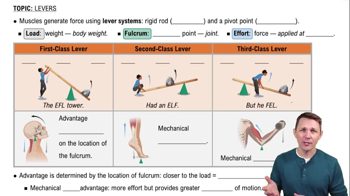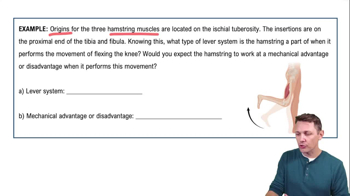Here are the essential concepts you must grasp in order to answer the question correctly.
First-Class Lever
In a first-class lever, the fulcrum is positioned between the load and the effort. This arrangement allows for a balance of forces, enabling the lever to change the direction of the effort applied. A common example is a seesaw, where the fulcrum is in the center, allowing both sides to lift loads effectively.
Recommended video:
Second-Class Lever
A second-class lever has the load situated between the fulcrum and the effort. This configuration allows for a mechanical advantage, as less effort is needed to lift a heavier load. An example of a second-class lever is a wheelbarrow, where the wheel acts as the fulcrum, and the load is carried in the middle.
Recommended video:
Third-Class Lever
In a third-class lever, the effort is applied between the fulcrum and the load. This arrangement does not provide a mechanical advantage but allows for a greater range of motion and speed of the load. A common example is a pair of tweezers, where the fulcrum is at one end, and the effort is applied in the middle to grasp an object.
Recommended video:
 Verified step by step guidance
Verified step by step guidance


